Hey Guys,
I’m building a deck which will be 25′ long by 15′ wide. I’ll be using a composite and I would like to know if there is a specific way to stagger the deck boards so they look pleasing to the eye. Should I use 16 footers? 20′? Or should I buy a cobination of sizes? Would like to hear how you pros do it .Thanks
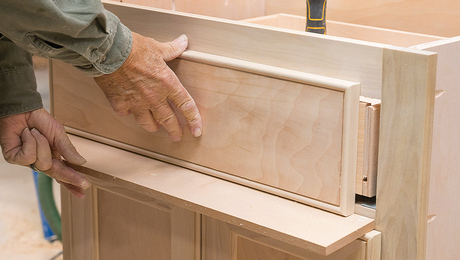
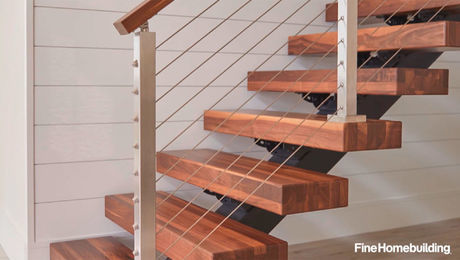
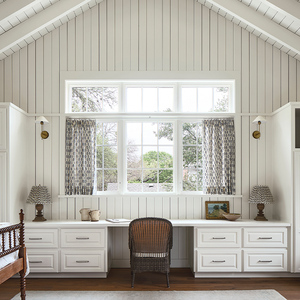
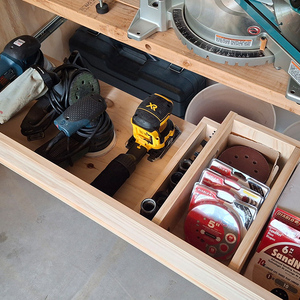

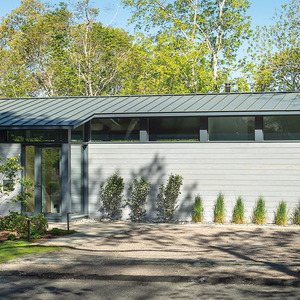













Replies
Whatever you do for a pattern is up to you....many different ones can look good. Just know what you're doing for a pattern before ordering and keep it in mind when you're laying out your joists.
FWIW.... why not do a 16' deep deck instead of 15'? Make the most of what you're buying for stock since you'll be buying 16' framing anyway, right? Just a thought.
EDIT: Removed some of the gobblygook.
Edited 8/11/2004 9:33 pm ET by dieselpig
rickyw,
Depending on the MFGR. of the decking, you will probably only be able to buy the boards in 2 or three sizes. For 25', probably do it with 12's and join them with a scarf joint ( cut a 45 degree bevel on the ends so they overlap ) done properly it should come out almost seamless. Otherwise, my preference is to cut each board back a joist, making a angled seam line.
Edit: Just realized that 2-12' boards is a hair shy of 25'. I guess either shrink it to 24' or get 28' out of it if you can.
Cole
Cole Dean
Dean Contracting
Edited 8/11/2004 8:58 pm ET by COLEDEAN
What do you mean by cut each board back a seam? Do you mean that if I use my first board at 16' then the second board would be 14' 8"? and then the next board13' 4"?
Ricky,
That is correct. But I like Greggs idea better. Run a board perpendicular down the middle and go out from there. I also like to frame the outside edge of the deck with one deck board all of the way around. The edges running perpendicular to the house will die into this board, while it will be continous with the 5.5" width of the boards at the outer edge of the deck. Make sure and cut nice flush miters at the joints of the picture frame. This method requires a little more framing, but is worth it.
Cole
Cole Dean
Dean Contracting
Edited 8/11/2004 9:50 pm ET by COLEDEAN
If I run a board perp. down the middle, would you reccomend that I run the perimeter deck boards opposite of the main layout? Or how would you have the perp. board down the middle die out at the end? By the way I will have two 3' staircases on each side centered and a 8' staircase centered off the back end.
ricky,
First, not knowing how this deck lays out with regard to your house, I can't guarantee this result, but here you are, assuming this is attached to the house and the decking will run parallel to the house. ( most common )
Frame your deck with joists 16" o.c. from end to end. But frame an extra "nailer" joist 5.5" from outside of rim joist to center of "nailer" around perimter ( actually just the end rims ) of deck structure to catch edge of band board.
Then, run a deck board parallel to the joists down the middle of the deck. You will need to install blocking at 16" o.c between two joists to attach this board to.
Run all of your other decking perpendicular from this "divider" board out to the band board at the perimeter, keeping in mind that at the outer edge of your deck, the first inboard peice of decking will run parallel with this, (acutally you're first deck board will serve as this band board) and this gives you a clean look with no seams other than the end "grain" of the board dying into the band board and the divider.
As for stairs, there are numerous ways to do this. If they take off from your rim joist or fascia then no worry's. Sometimes I like to cut back a couple of joists and inset the staircase into the deck. This only works if you have cantilevered the joists over a beam, or install additional posts under the deck to support the short joists. If you choose to go this route, then run the edge band of decking around the inset as described. Nothing fancy, but it does break up the mononoty.
ColeCole Dean
Dean Contracting
I like Greggs idea as well. I've always like the results of having no real pattern to the deck boards if I do have to splice them. Kinda like siding. Usually with a little thought, the right layout comes to mind.
Something like (if using all 16s or so) run a full, finish, then a 10, finish, then a 12, finish, then a 4, finish, etc. Make sense?
You have the right idea about what Coledean meant by cutting back a seam, except that the joists being 16" on center will add 3/4" to your first measurement (all measurements taken from the starting edge, actually), since your first board will go all the way to the edge of the first joist, (not start at that joist's centerline) unless you follow the other advice of having and edge band.
The other thing you could do is run your joists the long way and your decking boards the short way and use full lengths with no joints. (May not work for you to do it this way though.)
No joints in the field ! If you can't run material full length put a perpendicular in the middle or at some obvious spot and run decking from their to edge of deck.And please, no herringbone pattern. Get creative and get past all the obvious--- seen it before solutions. Decks are the one chance to fly and have a little fun. Go man , Go.
ricky.. don't get lost in the details... just make sure you are not joint on joint... breaking them back diagonally every joist is good.. ..
if you are using a composite and your least dimension is 12' or 16' .. layout a pattern to scale with paper & pencil.. you'll find something you like.. then go with itMike Smith Rhode Island : Design / Build / Repair / Restore
I'm working for a deck outfit that does everything on the angle or herringbone. You can also use parting boards to break up the pattern and change direction. You just have to frame for it. I'd let the house and the environment influence your choice (the zen of design can be fun) if you're doing it for yourself or charge more if you're doing it as a job. Changing levels is another means to break it up. Personally, 25 feet running all the same direction is a bit boring...
plan the framing so the decking runs the 15' way, use the 16' boards and you have no butt joints at all.
But if the framing is done, just nbuy the longest economically feasable, and random the joints however - just so they don't double up.
Welcome to the
Taunton University of Knowledge FHB Campus at Breaktime.
where ...
Excellence is its own reward!
If you reduce the width to 14 feet and run the decking diagonally, you can use 20 footers and have no joints at all.